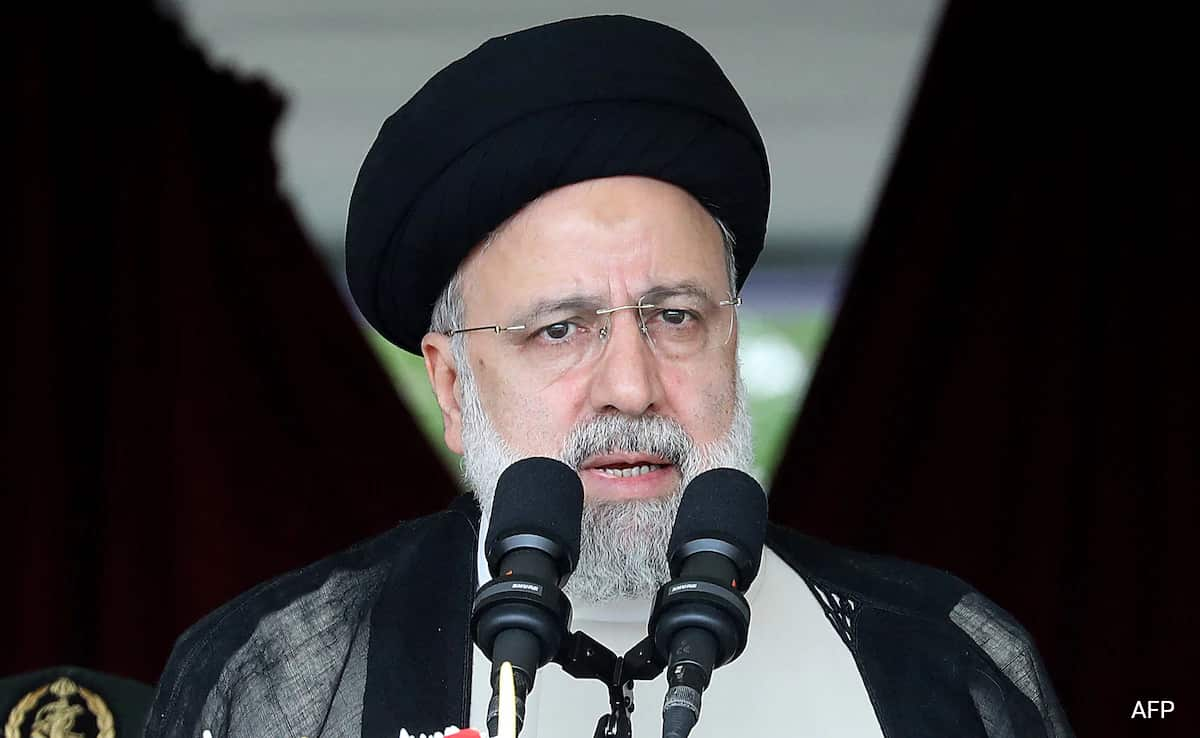A helicopter carrying Iranian President Ebrahim Raisi and his foreign minister crashed on Sunday as it was crossing mountain terrain in heavy fog, an Iranian official told Reuters, and rescuers were struggling to reach the site of the incident.
The official said the lives of Raisi and Foreign Minister Hossein Amirabdollahian were “at risk following the helicopter crash”, which happened on the way back from a visit to the border with Azerbaijan in Iran’s northwest.
“We are still hopeful but information coming from the crash site is very concerning,” the official told Reuters, speaking on condition of anonymity.
State TV quoted an official as saying that at least one passenger and one crew member had been in contact with rescuers. It also said the helicopter had been found, though Iran’s Red Crescent denied this report.
Iranian Supreme Leader Ayatollah Ali Khamenei, who holds ultimate power with a final say on foreign policy and Iran’s nuclear programme, sought to reassure Iranians, saying there would be no disruption to state affairs.
Iranian state media said bad weather was the cause of the crash and was complicating rescue efforts. The chief of staff of Iran’s army ordered all the resources of the army and the elite Revolutionary Guard to be put to use in search and rescue operations.
“It is dark and it has started raining, but the search continues. Rescue teams have reached the area … however, the rain has created mud, making the search difficult,” a local reporter told state TV.
The national broadcaster had earlier stopped all its regular programming to show prayers being held for Raisi across the country and, in a corner of the screen, live coverage of rescue teams deployed on foot in the mountainous area in heavy fog.
The rescue teams were expected to reach the probable site of the crash later on Sunday evening.
Neighbouring countries expressed concern and offered assistance in any rescue. The White House said U.S. President Joe Biden had been briefed on reports about the crash. The European Union offered emergency satellite mapping technology to help Iran with the search.
HARDLINER, POSSIBLE SUCCESSOR TO KHAMENEI
The crash comes at a time of growing dissent within Iran over an array of political, social and economic crises. Iran’s clerical rulers face international pressure over Tehran’s disputed nuclear programme and its deepening military ties with Russia during the war in Ukraine.
Since Iran’s ally Hamas attacked Israel on Oct. 7, provoking Israel’s assault on Gaza, conflagrations involving Iran-aligned groups have erupted throughout the Middle East.
Raisi, 63, was elected president in 2021, and since taking office has ordered a tightening of morality laws, overseen a bloody crackdown on anti-government protests and pushed hard in nuclear talks with world powers.
In Iran’s dual political system, split between the clerical establishment and the government, it is Raisi’s 85-year-old mentor Khamenei, supreme leader since 1989, who holds decision-making power on all major policies.
For years many have seen Raisi as a strong contender to succeed Khamenei, who has endorsed Raisi’s main policies.
Raisi’s victory in a closely managed election in 2021 brought all branches of power under the control of hardliners, after eight years when the presidency had been held by pragmatist Hassan Rouhani and a nuclear deal negotiated with Washington.
However, Raisi’s standing may have been dented by widespread protests against clerical rule and a failure to turn around Iran’s economy, hamstrung by Western sanctions.
Raisi had been at the Azerbaijani border on Sunday to inaugurate the Qiz-Qalasi Dam, a joint project. Azerbaijan’s President Ilham Aliyev, who said he had bid a “friendly farewell” to Raisi earlier in the day, offered assistance in the rescue.














